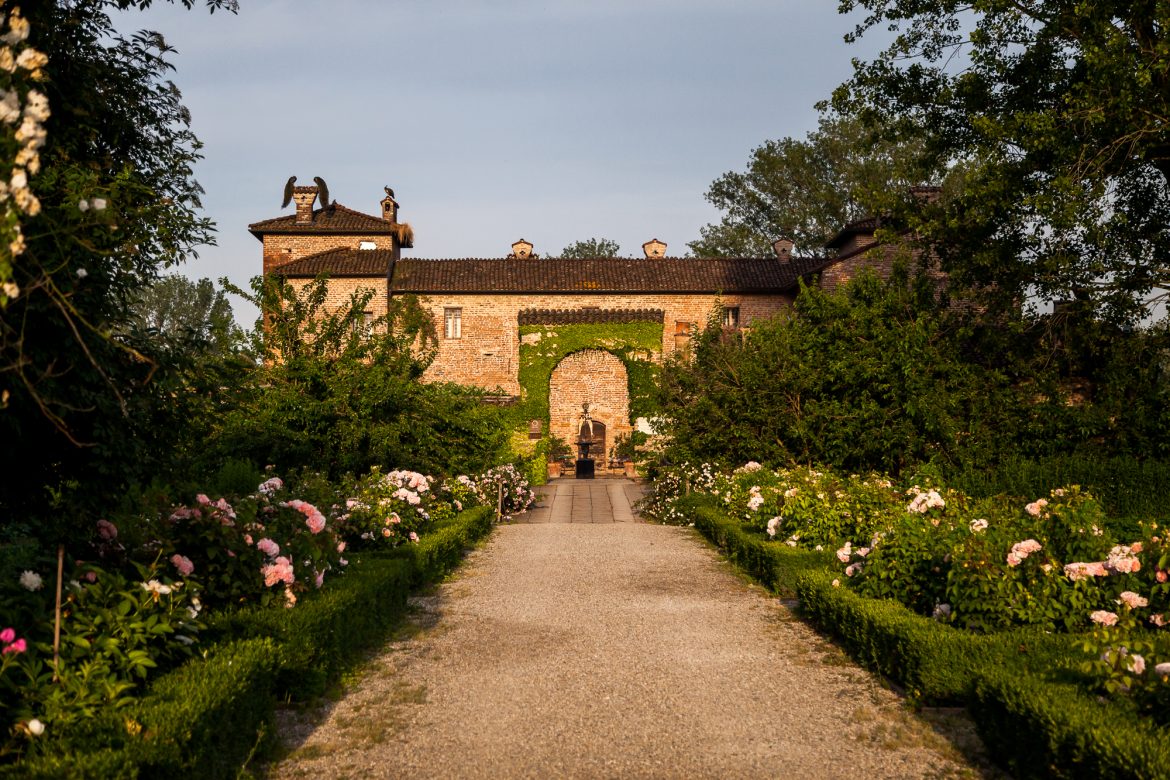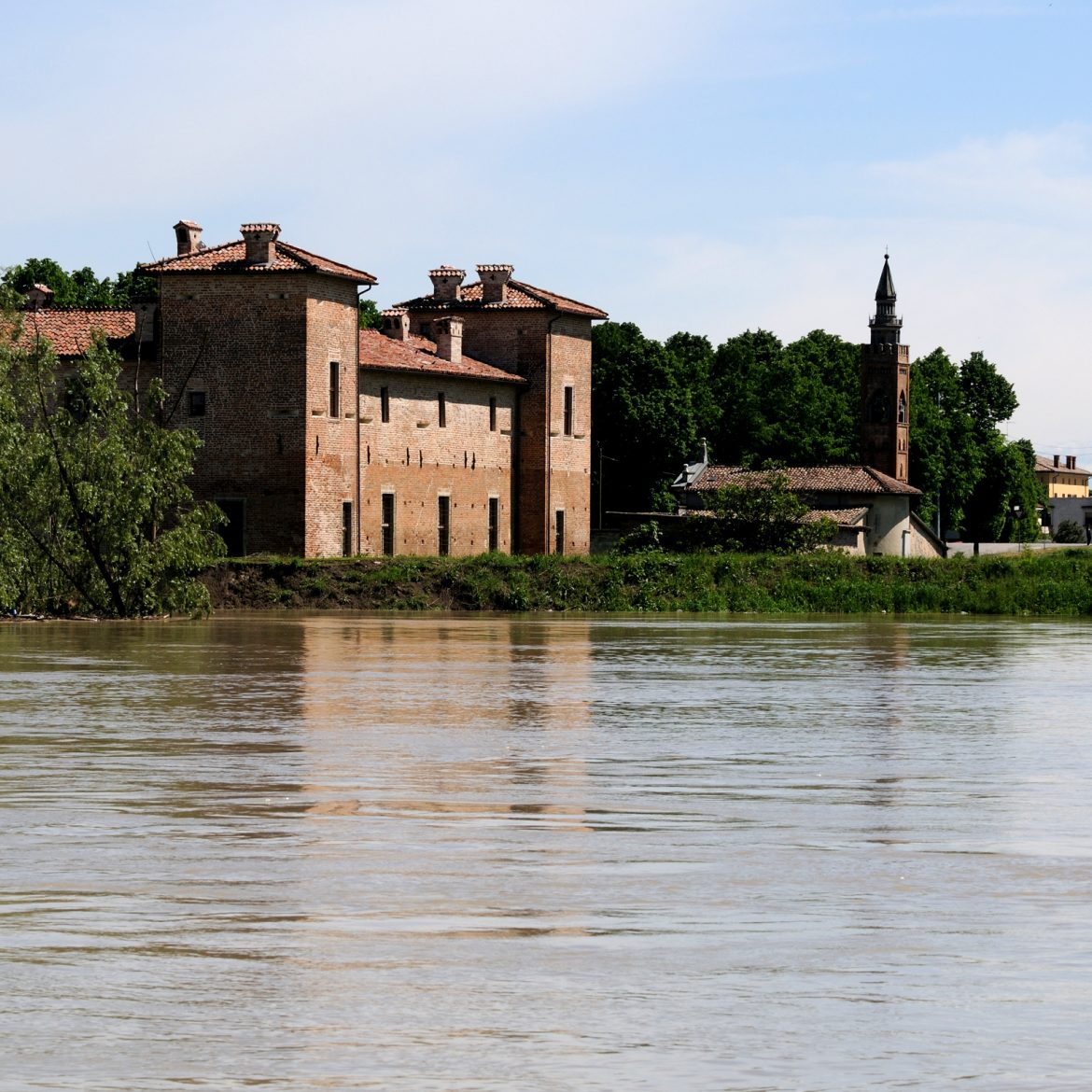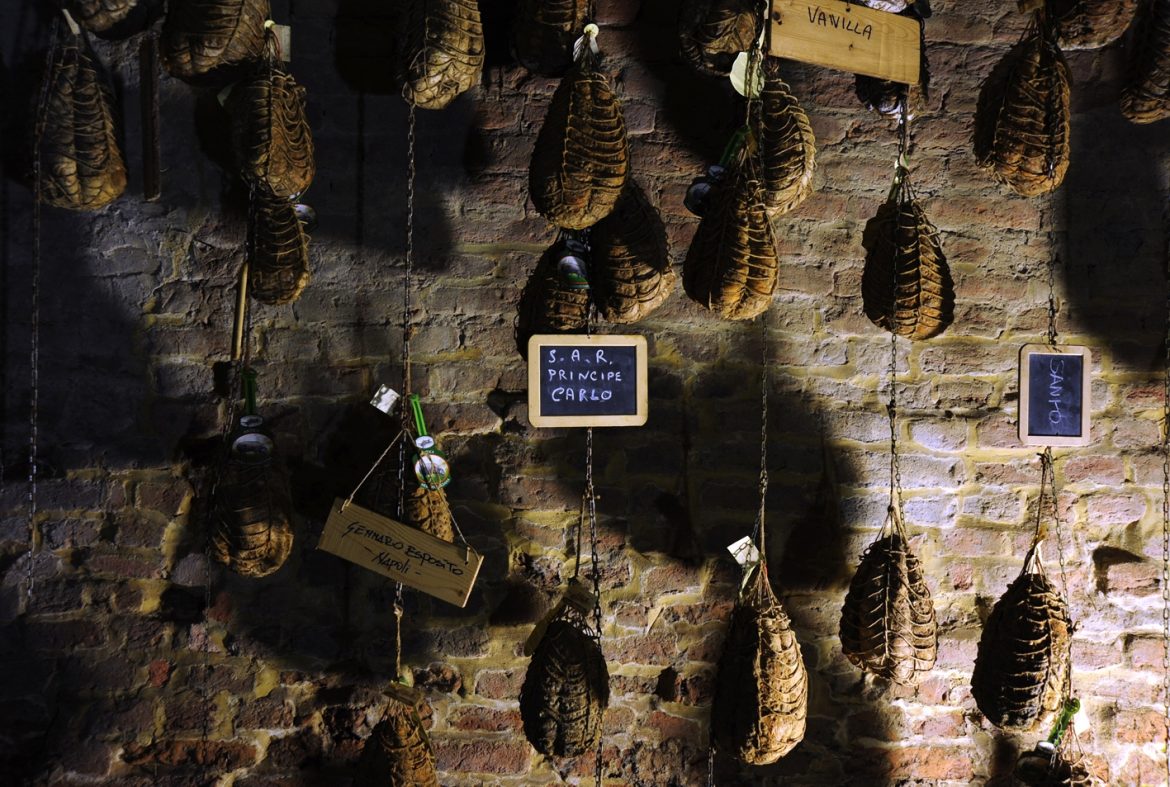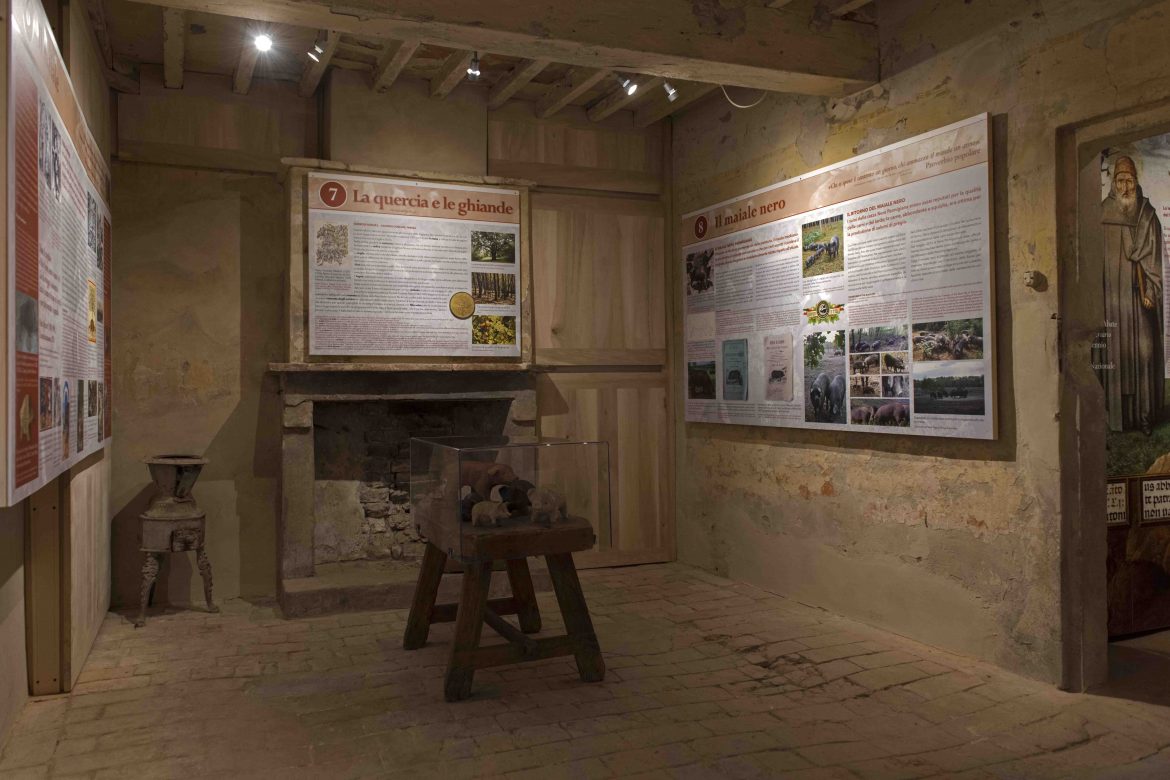Surrounded by fog and culatello, Polesine Zibello is a town characteristic of those along the River Po, featuring a tight network of canals and roads, pressed up against the banks of the river and the floodplains, which make for a pleasant bike ride.
Polesine Zibello was formed from merging the two municipalities of Polesine and Zibello. It is the kingdom of Culatello, a highly prestigious and traditional salami, the pride and joy of gastronomy in the area, famed around the world. Culatello di Zibello has been awarded the P.D.O. status, as it can only be made here, where the land is perfect for processing pork.
The countryside is classic of a riverside area – poplar trees and the river’s meanders punctuate the scenery, while giving way to mooring points and touristic and sporting attractions. Culatello is the patrimony and wealth of this land lain down by the Po, frequently enshrouded in fog, producing the perfect climate in which to produce and cure the king of salamis. Its production is an art, and a tradition passed down from generation to generation.
Under the domain of the Pallavicino family from 1249, Zibello remained under their influence until the beginning of the 1800s. The principal monuments erected in the 1400s and 1500s are owed to the Pallavicino family: the Palazzo Vecchio, characterised by wide porticoes opening up onto the main square; the parish church of Saints Protasius and Gervasius, built at the beginning of the 16th century in late-gothic style; and the ex-convent of the Dominicans, built between 1494 and 1510, a large building featuring a cloister with beautiful stained-glass windows. Today it is home to the G. Riccardi Museum of Farming Culture which curates the history and wisdom of the agricultural world, as well as relics and memories of life in the countryside from the second half of the 1800s to the 1900s. It is divided into sections which explore different themes: the kitchen, the ‘porta morta’ [an area typical of rural houses which linked the farmyard, the stable and the farmhouse]; the cellars; and the artisan activities. Each of these themes are explored with a collection of objects with which adults and children of today are not familiar.
On the first floor of the ex-convent, we find the Museum of Cinema: a place where time seems to have stood still, showing us a wide range of old-fashioned objects such as optic lenses and slide projectors. Each room contains objects that are unique, rare and in perfect working order. For example, there is a French praxinoscope from 1827, hand-decorated gramophones from the 1920s, as well as copper lanterns.
Zibello also offers a small yet beautiful theatre located inside the Palazzo Pallavicino, which was built at the end of the 1700s, while in 1827 it was equipped with 12 stages set around a royal stage. The loggia on the second floor was built in 1872.
Born on the flood plains (nicknamed ‘Polesini’), Polesine was also included in the domain of the Pallavicino family, thanks to its castle and marquisate title, before passing to the Farnese Duchy. It maintained its importance as a river port and agricultural centre for a long time. Near the river, we find the Antica Corte Pallavicina, a true castle along the Po. It is a building from the 1300s, and was used until the end of the 1700s by the Duchess Maria Luigia who used it as a lookout tower. The Corte has recently been renovated thanks to the Spigaroli family, who have created a relais, farm, restaurant and the Culatello Museum.
A visit to the Antica Corte starts in the vegetable garden, then passes under the arch to enter into the ample courtyard leading to a small door where we enter the kitchen, now the kingdom of Michelin-starred chef Massimo Spigaroli. Following on from the kitchen we have the elegant rooms painted with frescoes, then the cellars filled with Culatello in different stages of the curing process. A must-see is the “Museo del Culatello e del Masalén”, a piece of history re-lived through old maps, images, interesting postcards, videos and objects linked to the local traditions. The museum has an open-air extension called “Po Forest”: it leads us on a fascinating walk through the woods of the floodplain, which lead us to the farms where ancient local breeds are raised, including the maiale nera from Parma. Near to the Corte is the neoclassical church dedicated to the Blessed Virgin of Loreto, built in 1846 and has subsequently been enriched with two neogothic porticos, built in 1920, as well as the bell tower, a small-scale reproduction of the tower in Cremona.
Polesine and Zibello are also two stops on the “November Porc – let’s hope it’s foggy!” event, organised by the Strada del Culatello, where the local knowledge and flavours combine during the month of November. Yes, you understood correctly – the fog is a fundamental element in the production of the exquisite local salamis, as well as adding a magic touch to the atmosphere. The fair offers four different stops: “The Flavours of Pork [I sapori del Maiale]” in Sissa, “We cook Priests and Bishops [Ti cuociamo Preti e Vescovi – Preti is a type of pork dish!]” in Polesine, “Delights at the Court of King Culatello” in Zibello, and “Harmonies of spices and infusions” in Roccabianca” and attracts visitors from all over Italy and beyond.
If you cross over the River Po you will enter the province of Cremona, and will find the fascinating “Paleoanthropological Museum of the Po”. It was founded in 1998 by the national palaeontologists’ group and the municipality of San Daniele Po (Cremona), and represents a unique cultural panorama of the territory. Inside there are important fossils that were found along the river; including remains of mammoths, elks, bison and other species from the glacial era, as well as the skull of a Neanderthal man. This fossil, named “Pàus”, represents the only testimony of the presence of this species in the area








